Cover plate activation temperatures are equal to or less than fire sprinkler activation temperatures – but that’s not the whole story
Many people aren’t sure what to call them – a fire sprinkler cap, a recessed sprinkler cover, ceiling plate, or even the “plastic white circle on my friend’s ceiling.” The most common term is a “cover plate,” and they keep a fire sprinkler’s head out of sight until rising temperatures indicate that a room may be on fire. Though they’re simple enough, there’s no one-size-fits-all cover plate. And the wrong fire sprinkler cover plate temperature rating may prevent a concealed sprinkler from extinguishing fires.
Sometimes confused with escutcheons, cover plates safely hide concealed fire sprinkler heads
Cover plates have two parts: a thin metal plate and a frame. When ceiling temperatures get hot enough, the solder – a metal compound connecting these components – melts, the plate falls, and the sprinkler head comes into view. Watch as a concealed sprinkler cover plate detaches under intense heat:
A cover plate protects sprinklers from dust, dirt, and debris. That’s important because a dirty, aka “loaded” sprinkler may respond too slowly to changes in temperature, allowing a fire to spread.
Cover plates also protect the fragile glass bulb which contains the heat-responsive liquid that determines when a fire sprinkler activates. Accidentally breaking one of these bulbs can cause serious flooding and tens of thousands of dollars in damage.
In addition, sprinkler heads don’t look good on many walls and ceilings, especially when placed in a home. Concealed sprinklers provide an equally safe but better-looking alternative, and some manufacturers are willing to provide fully-functioning cover plates in custom colors and patterns.
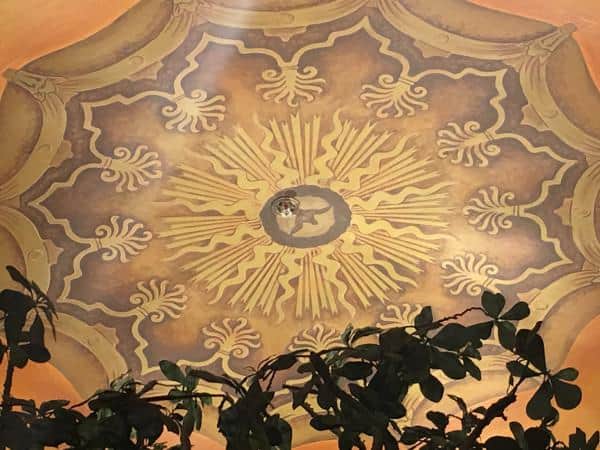
It’s easy to confuse cover plates with escutcheons. Both improve the look of a room by concealing unsightly parts of a sprinkler installation. But an escutcheon only conceals the hole in the wall or ceiling where sprinkler heads connect to water supply lines. The sprinkler head still remains visible. Cover plates fully remove fire sprinklers from view and have heat-sensitive components.
Click here for a more in-depth comparison of fire sprinkler covers and escutcheons.
There’s one right cover plate for every concealed sprinkler
The National Fire Protection Association’s (NFPA) guidelines for fire sprinkler installation, contained in NFPA 13: Standard for the Installation of Sprinkler Systems, require cover plates to be part of a listed sprinkler assembly.
From the 2016 edition of NFPA 13
6.2.7 Escutcheons and Cover Plates.
6.2.7.1 Plates, escutcheons, or other devices used to cover the annular space around a sprinkler shall be metallic or shall be listed for use around a sprinkler.
6.2.7.3 Cover plates used with concealed sprinklers shall be part of the listed sprinkler assembly.
6.2.7.4 The use of caulking or glue to seal the penetration or to affix the components of a recessed escutcheon or concealed cover plate shall not be permitted.
Cover plates are also one of many items that facility managers need to regularly inspect on a fire sprinkler system. NFPA 25: Standard for the Inspection, Testing and Maintenance of Water-Based Fire Protection Systems requires that every sprinkler has a listed cover plate; if one is not available, both the sprinkler head and the cover plate must be replaced.
From the 2017 edition of NFPA 25
5.2.1.1.5 Escutcheons and coverplates for recessed, flush, and concealed sprinklers shall be replaced with their listed escutcheon or coverplate if found missing during the inspection.
5.2.1.1.5.1 Where the listed escutcheon or coverplate from a listed assembly is missing and is no longer commercially available, the sprinkler shall be replaced.
There are a few big takeaways here: A cover plate is designed to work with specific sprinklers. If a cover plate is missing, replace it with a listed replacement. And if it’s fallen off, don’t attempt to repair it – also replace it. But what exactly is a “listed” cover plate or a “listed sprinkler assembly?”
Organizations like UL and FM Approvals ensure that products like fire sprinklers are reliable, durable, and fully operational. “Listed” sprinklers and components are tested under heat, pressure, impact, and other conditions.
When a listed assembly includes a specific component – like a cover plate – the laboratory has guaranteed that the product performs as expected with all the listed components included. Thus, a cover plate that is part of a listed assembly is replaceable only with a specific match.
Fire engineer Karl Wiegand of the National Fire Sprinkler Association emphasized his support for this requirement in comments to the NFPA. Writing to the NFPA’s Technical Committee on Inspection, Testing and Maintenance of Water-Based Systems in 2012, Wiegand said:
According to section 6.2.7.3 of NFPA 13, the cover plate is a part of the concealed sprinkler’s listed assembly and when they are missing, it should be treated as if any other portion of the sprinkler is missing. A missing cover plate can indicate a problem with ceiling sag or other issues integral to proper sprinkler placement with respect to the ceiling. If the ceiling has sagged to the point where the sprinkler is no longer below the ceiling, this serious problem needs to be corrected and the missing cover plate is a symptom that points to the larger concern.
One correct plate means one correct temperature
When purchasing that exact replacement, the rated temperature is key. Following the manufacturer’s guidelines will guarantee that the solder – the bond between plate and frame – melts at the right temperature and time. Fire sprinklers, like cover plates, are heat-activated. Modern fire sprinklers are controlled by a glass bulb filled with heat-sensitive fluid. As the temperature around the glass bulb rises, the fluid expands. When that bulb reaches a specific temperature, it breaks, causing the sprinkler to activate.
This means that a low melting point for cover-plate solder may cause the plate to detach even when there’s no chance of the sprinkler activating – thus wasting money – while a plate with too high a melting point may block the path of water exiting the sprinkler.
Often, these melting points are about 20 degrees Fahrenheit below the temperature at which the sprinkler’s bulb will break. But that’s not always the case. To determine the right temperature for a fire sprinkler cover plate:
- Locate the five-or-six-digit sprinkler identification number, or SIN, and the sprinkler’s temperature.
- Find the appropriate plate temperature in the sprinkler’s technical data sheet.
- Always default to replacing the component from the same manufacturer.
The easy way to find the right temperature
If you have an existing fire sprinkler cover, unscrew it from the ceiling – gently. If it spins but doesn’t unscrew, tug (not too hard!) on it. A sticker or stamp inside the cover plate should provide the information needed to order the listed substitute.
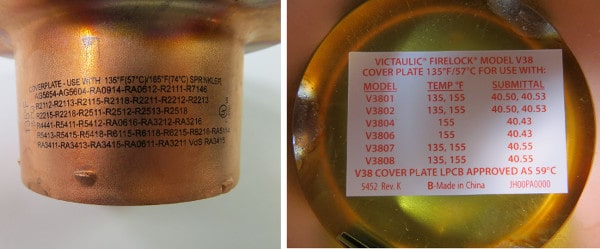
The temperature for the Victaulic Model V38 cover plate pictured above is 135 degrees Fahrenheit. You can now search your preferred supplier’s site for a replacement – just make sure to order the version of that cover plate at the correct temperature.
These and other tips are detailed in our guide to selecting a fire sprinkler cover plate.
The less-easy way to find the right temperature
If your cover plate is missing – but your sprinkler isn’t – take a look at the deflector (pictured below). Deflectors from sprinklers made after 2000 are imprinted with the SIN (or model number) and sprinkler temperature.
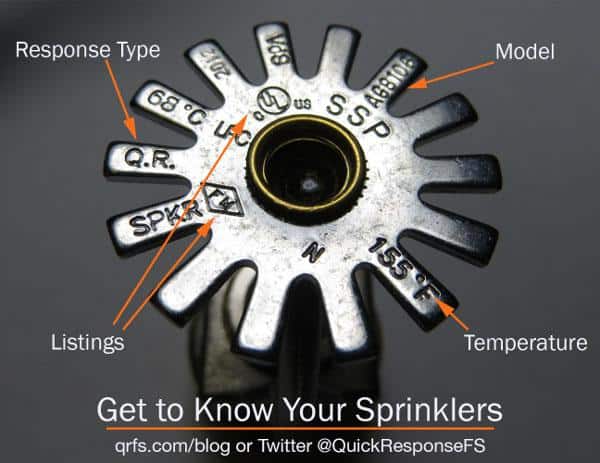
From here, you’ll want to locate that sprinkler’s technical data sheet and determine which cover plate is needed.
First, search for the SIN number on your preferred search engine. The table below lists the SIN prefix and manufacturer for select suppliers. A sprinkler with a SIN of R0123 was manufactured by Reliable Automatic Sprinkler Corporation.
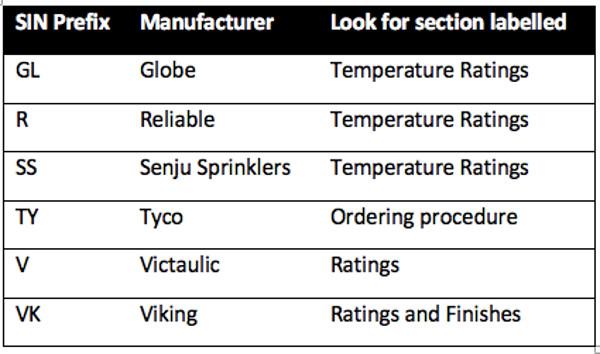
In this example, searching online for “Victaulic V3801” yields a data sheet. In the section called “Ratings,” we find the following table:


Using the information from the deflector, it’s possible to figure out which cover plate is needed: One listed at 135 degrees Fahrenheit can be used with a V3801 sprinkler rated at 135 or 155 degrees, while a cover listed at 165 degrees can be used with a sprinkler rated at 175 or 200 degrees Fahrenheit.
Finding the right cover plate isn’t always easy. But if you’re certain of which one you need as a replacement, feel free to browse our selection of cover plates.
If you’re still struggling to figure out or find the cover plate you need, don’t hesitate to contact us at 888-392-3362 or fill out our contact form and we’d be happy to help.


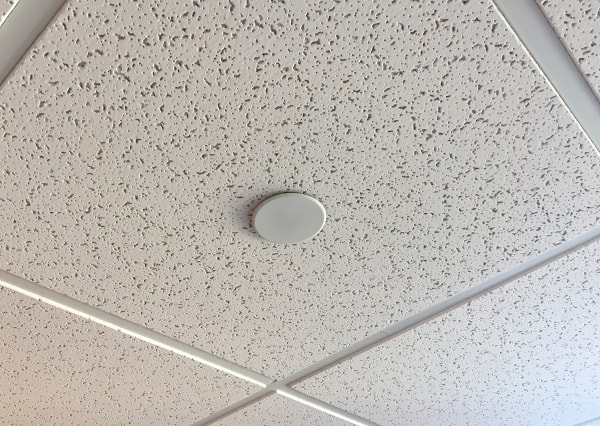

I’m looking for al alternative to the discontinues STAR E Series SSU-2 Brass upright sprinkler head.
Lissete — We will forward your request to QRFS customer service; you can also email them directly at support@qrfs.com with any questions you may have for faster service in the future! Thanks.